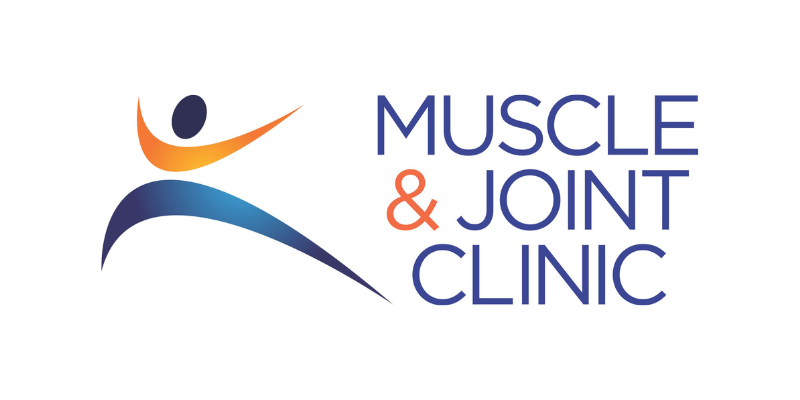Champagne and cookie season is over, the New Year has begun, and many of us are looking for ways to improve our health and well being in 2025.
What if I told you there is an easy, efficient, and inexpensive tool that can help boost your energy levels, prevent chronic disease, and even shed pounds? Continuous glucose monitoring devices, or CGMs, can help you establish healthy habits in the short and long term—even if you don’t have a blood sugar imbalance.
Below, a primer on continuous glucose monitoring devices and how you can use them to make healthy choices about diet and exercise this year.
First, the Basics: Why Does Our Blood Sugar Fluctuate?
Food fuels our bodies. When we eat, the amount of glucose—or sugar—in our blood rises, providing energy to our cells. It’s natural for blood sugar to fluctuate throughout the day as we eat and digest meals. Within a few hours of eating, a properly functioning body will bring blood sugar levels down.
Tracked over the course of the day, balanced blood sugar looks something like this.
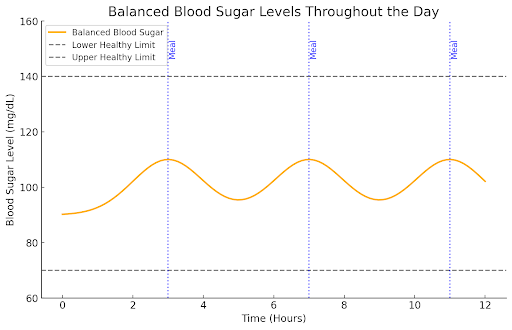
Blood sugar spikes occur when you have more glucose in your bloodstream than your cells can absorb. This leads to an excess of glucose circulating in the blood.
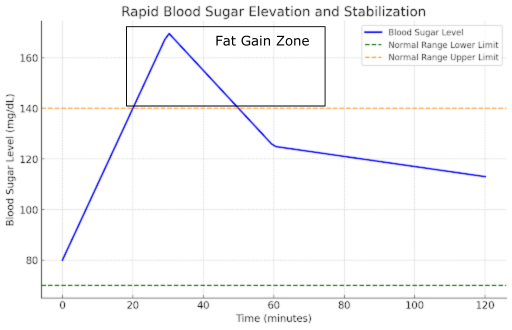
Why Should I Avoid Blood Sugar Spikes?
While fluctuation in blood sugar levels is normal, repeated blood sugar spikes can eventually lead to metabolic problems, like diabetes and pre-diabetes, as well as other serious health problems, including heart disease, high blood pressure, high cholesterol, and gut problems like irritable bowel syndrome.
There is also strong evidence that blood sugar imbalances are tied to a devastating end-of-life disease: dementia. Some researchers now refer to dementia as type III diabetes because blood sugar handling problems are the main driving force in the development of the disease.
Research suggests that blood sugar imbalance affects between a third to a half of the U.S. population, with symptoms that you may or may not be experiencing. Signs that your blood sugar is imbalanced include weight gain, headaches, fatigue, abdominal pain, irritability, tingling lips, nausea, shakiness, and anxiety. In addition to these symptoms, the presence of belly fat is an indicator of blood sugar imbalance; the more belly fat you have, the more likely your glucose levels aren’t healthy.
Rapid blood sugar changes unproductively stress the body. In response to spikes in sugar, the body releases hormones, including cortisol and insulin. Cortisol further increases blood sugar while insulin causes the body to store excess sugar as fat. (We’ll talk about weight loss a little later). Both of these hormones cause inflammation, the leading causes of disease and pain.
On the flip side, learning to moderate your blood sugar levels can help you maintain your mood, focus, and energy throughout the day. You know that mid-afternoon slump? That’s the effect of your lunch wearing off as the glucose levels in your blood dip.
Why Do I Recommend Continuous Glucose Monitoring Devices?
As a healthcare provider, I’ve worked with many patients who use continuous glucose monitoring devices. I’ve also had the opportunity to use one myself. Until recently, CGMs were only available to people with diabetes or at risk for diabetes; now, they’re available to all consumers. I highly encourage everyone and anyone to try using one. Why?
Traditionally, blood glucose levels are tested by a blood draw in a lab, which captures only a brief moment in time. By contrast, CGMs track your blood glucose levels all day long, offering FAR more detailed and highly personalized data than the standard blood draw.
Seeing your blood glucose levels in real time can help you make informed decisions about what you eat and drink, when and how you exercise, and how you manage sleep and stress—based on data that specifically reflects your body and metabolic processes.
Healthy Blood Sugar Ranges
If you are monitoring your blood glucose for the first time, your goal is to minimize blood sugar spikes and verify that your blood sugar remains within healthy ranges throughout the day.
As a general rule of thumb, blood sugar should stay below 140 after a meal, then taper gradually. The ideal daily average is 105, with morning waking blood sugar at 99 or lower. Take note if your blood sugar trends above these ranges; it could be a sign of pre-diabetes or diabetes. If this is the case, seek professional guidance from your doctor or healthcare provider.
Let’s take a closer look at the factors that can influence your blood sugar.
Tips to Balance Your Blood Sugar
As anyone who has visited the clinic knows, I believe in a holistic approach to health. When it comes to balancing your blood sugar, what you eat, when you eat, how well you sleep, your exercise habits, and even stress can affect your body’s metabolism.
Diet
When managing your blood sugar, what and how you’re eating is the single most important factor to consider. Adding more fiber to your meals while cutting down or eliminating high-sugar food and drinks are easy first steps.
Simple carbs are often the cause of glucose spike. As a rule of thumb, minimize white foods— bread, rice, pasta, and potatoes. The key is to learn what foods your body, specifically, responds best to.
Some people also experience more balanced blood sugar when they practice food stacking. In each meal, you eat fiber (salad or vegetables) first and starches last. Try different ratios to find what works best for you, which will change over time.
Movement
Exercise is essential to a healthy lifestyle—and to managing blood sugar. Research shows that zone 2 exercise and weightlifting for a minimum of 150 minutes per week is optimal.
Even movement, such as a short, brisk walk after a meal, keeps blood sugar levels much lower. We burn up the blood sugar as it enters the bloodstream, before it causes a spike.
Note that even if you exercise regularly, exercise can cause a spike in blood sugar, which counteracts the benefits of exercise—a subtle but well-documented form of overtraining. Stay tuned for a future edition of Joint Journey Journal on how to exercise to maximize health and burn fat.
Sleep and Stress
Lifestyle factors directly influence your blood sugar levels. I recommend my patients manage stress through mindfulness, breathwork, and exercise. Getting sufficient sleep is also a key ingredient to stabilizing your metabolism.
Here’s my blood sugar reading on a day after a good night’s sleep. As you can see, it’s pretty stable.
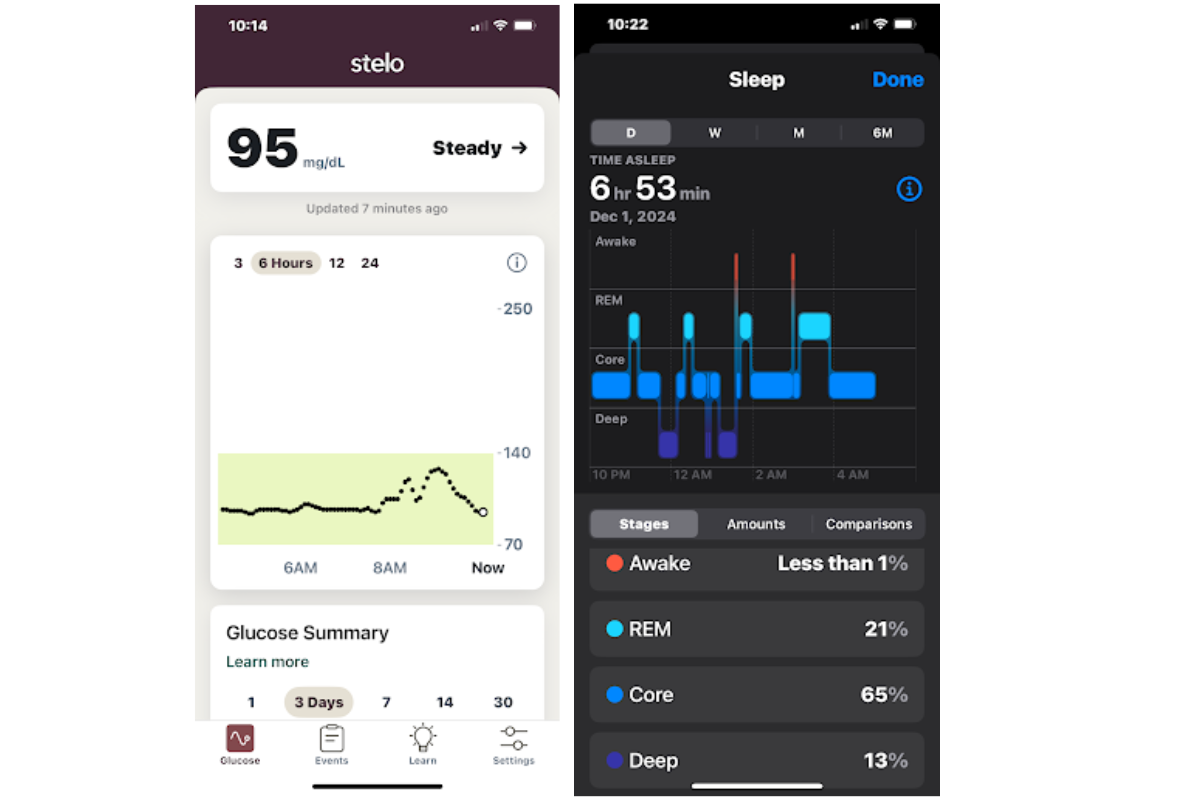
On a night I didn’t sleep well, the stress to my system reflected in my (much bumpier!) blood sugar levels.
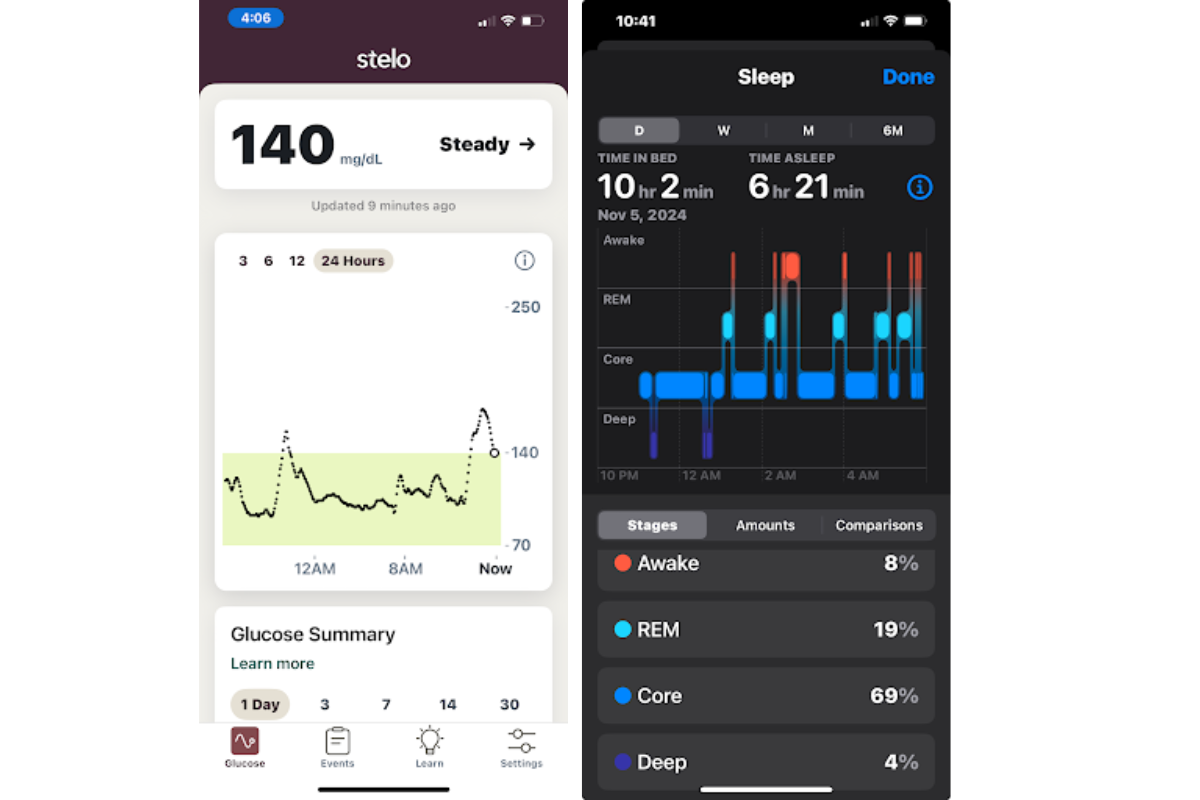
For some of us, getting a good night’s sleep is easier said than done! I’ll talk more about promoting a restful night’s sleep in upcoming newsletters.
Hydration
Simple and effective: stay hydrated. As a rule of thumb, you’re drinking enough water if your urine is very pale yellow or colorless first thing in the morning.
Supplements
Supplements can be very beneficial for many people, especially those who are pre-diabetic. Berberine, a supplement that is as effective as the leading-selling blood sugar medication, without side effects when used properly. We can talk more about how to appropriately use it for your specific CGM numbers.
Now What About Weight Loss?
It’s the classic New Year’s resolution—and it’s a good one. Keeping your weight at a healthy level is key to managing blood sugar and other chronic conditions. How can a CGM help?
When you have an excess of glucose in your blood, the body stores away the extra sugar as fat. Using a CGM to manage your blood sugar helps your body’s metabolism function more effectively—as well as avoid the spikes that lead to weight gain. What you’re looking for is the sweet spot between providing sufficient fuel for your body and avoiding rapid spikes in glucose.
For most healthy people, you can expect to start losing weight within the first 2 weeks of using a continuous blood sugar monitoring device—and your energy may also noticeably increase. Long term change takes 2-3 months for most people.
Where Can I Get One?
Interested in giving it a try? I recommend the Stello, which you can purchase online here. (The Muscle & Joint Clinic has no financial interest or gain from your purchase—I honestly recommend this product!)
If you start working with a CGM, I’d love to hear what you’ve learned the next time you come into the clinic!
I wish you a healthy, and happy, new year.
Visit MuscleJointClinic.com to learn how to feel better, longer or call us at 415.488.5372 to schedule your consultation.
In health, always,
Derik S. Anderson, DC, CPT, CSN | Clinic Director
PGA Tour, Medical Team Staff
Ehlers-Danlos Society
– Center of Clinical Excellence Award Winner
– Pain Management Committee Member
– International Consortium Committee Member
– Ehlers-Danlos Syndrome Research Grant Recipient
Fascia Research Society, Founding Member
Authorized Continuing Education Provider


